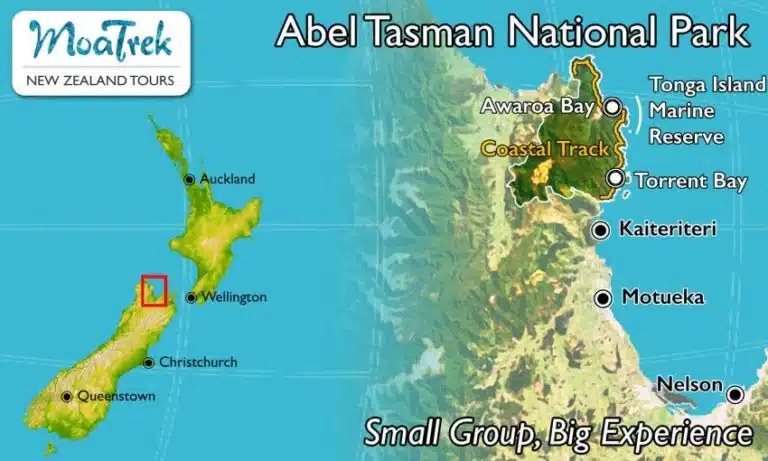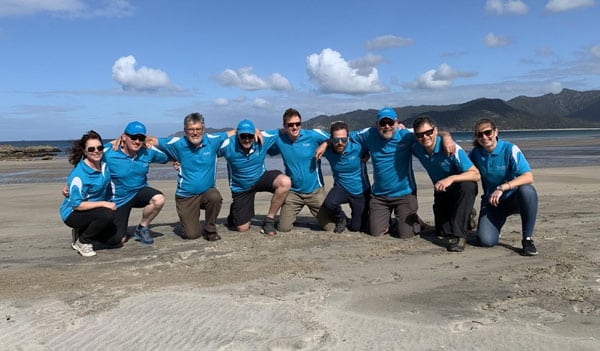Jagged mountain peaks dusted with snow, icy glacier lakes glittering in the sunshine, fields of pale lavender lupin swaying in the fresh, cool breeze. Aoraki/Mount Cook National Park is one of the most stunning unspoiled regions of New Zealand’s South Island – and boasts the highest mountain peak in the country.
It draws mountain climbers, star-gazers and nature-lovers and offers countless vistas that will stop you in your tracks with awe.
We love sharing the beautiful Ngāi Tahu legend, that tells how these mountains were formed when Aoraki (the eldest son of Raki, the Sky Father) and his brothers sailed their canoe down from the heavens to visit their stepmother Papatūānuku (the Earth Mother).
They saw that they would not be able to separate their father from his newfound love, so they headed back to the heavens. When Aoraki was reciting the karakia for the journey back, he misspoke – causing the canoe to be stranded on a rock. The brothers were turned to stone, their hair turning white to become the snowy mountain peaks.
Where is Aoraki Mount Cook National Park?
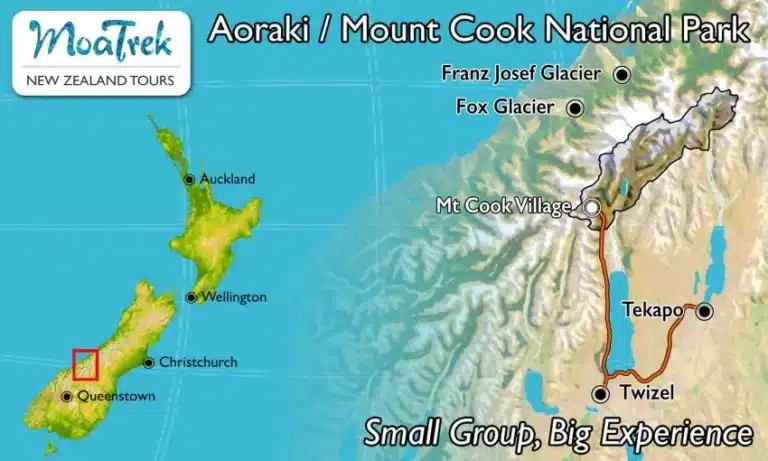
Activities in Aoraki/Mount Cook National Park
This pristine National Park attracts nature lovers and adventure-seekers from all over the world. Here are some of the most popular activities:
- Climbing Mount Cook: The challenge of climbing New Zealand’s highest mountain excites many intrepid mountaineers.
- Boating on Tasman Lake: Glide across the icy waters and see the glacier from a different perspective on a scenic boat trip.
- Aoraki Mackenzie International Dark Sky Reserve: A lack of light pollution here means the stars shine through bright and clear, creating a spectacular night sky alive with constellations. (It’s one of the largest dark sky reserves in the world!)
- Sir Ed Hillary Alpine Centre: A tribute to Sir Edmund Hillary, one of the world’s greatest explorers, this centre has fascinating exhibits on the Aoraki Mount Cook region and its history.
- Lupin Fields: In November and December, huge colourful fields of brilliant pink and purple flowers bloom in this region of New Zealand. They are a photographer’s dream, especially against the backdrop of turquoise glacier lakes and snow-capped mountains.
- Scenic Flights: One of the best ways to see the region is from above, taking a scenic flight over the mountains and landing on one of the glaciers. It’s the only place in New Zealand you can land on a real glacier!
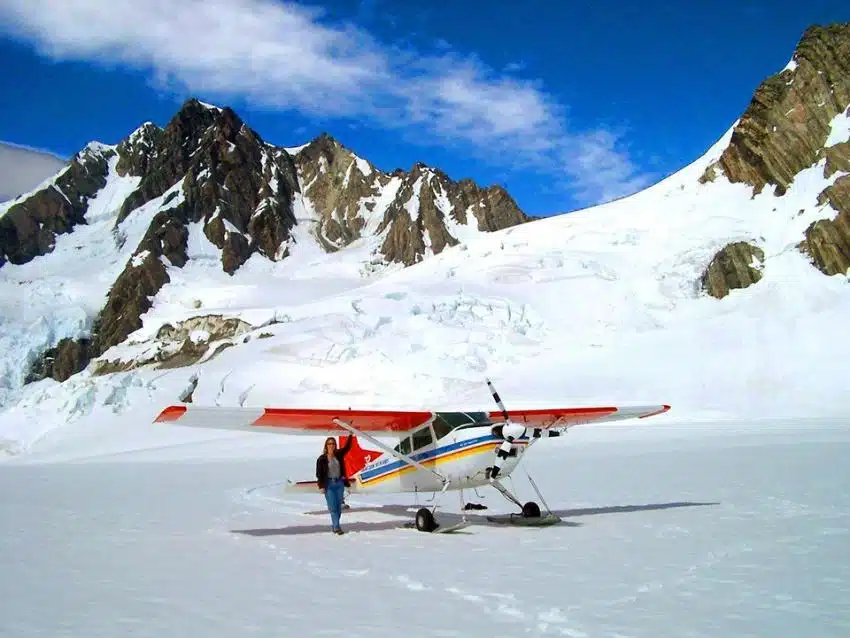
The Tasman Glacier
The Tasman Glacier is an enormous natural wonder, containing nearly one-third of all glacier ice in New Zealand. Huge chunks of bluish-white ice crack off from the glacier and splash into the icy waters below.
You can see and touch the ice up close with a heli-hiking experience. See our detailed Guide to Tasman Glacier for more information.
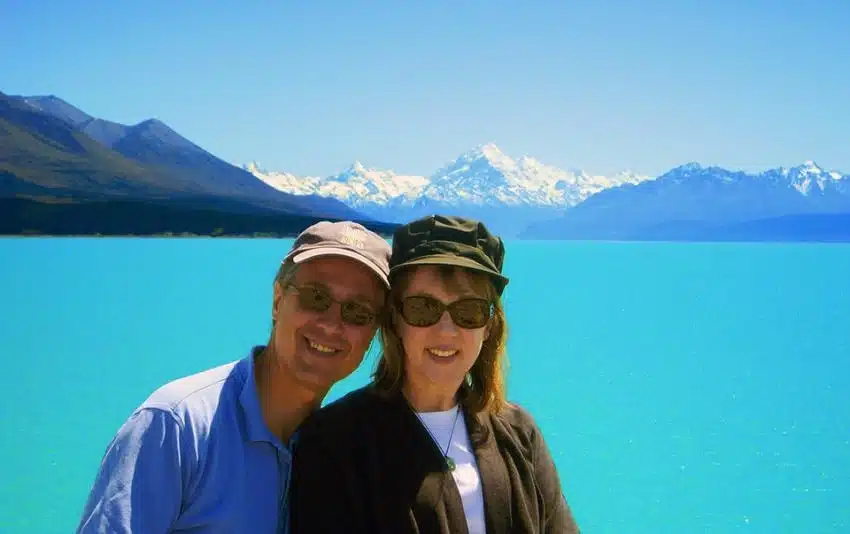
Top 5 Short Day Walks and Hikes in Aoraki/Mount Cook National Park
- Hooker Valley: This stunning track will take around three hours and will bring you to the beautiful glacial Hooker Lake. It begins from the White Horse Hill Campground car park. You’ll get jaw-dropping views of several major glaciers and Aoraki Mount Cook.
- Governors Bush Walk: A slightly different experience to the many alpine walks in the region, this track will take you through native New Zealand forest. The easy one hour loop goes through lush, old temperate Silver Beech rainforest, with mountain views to reward you at the top.
- Kea Point Walk: This easy two-hour return walk can be done in any season – and it’s particularly beautiful in the winter when the mountains are dusted with snow. A boardwalk trail takes you to a lookout point with views of bright turquoise Mueller Lake and Mount Sefton.
- Tasman Glacier Lookout: This hike is a short 30-minute uphill climb that will reward you with breathtaking views from a rocky outcrop 100m above. You can gaze at the beautiful Blue Lakes, their tranquil glacial meltwater reflecting the Mount Cook Range.
- The Red Tarns Track: Walk to these unique tarns, named for the red pond weed that grows within them. The two-hour return hike follows an easy walking track and offers beautiful panoramic views of the valleys below.
How to get to Aoraki / Mt Cook
There’s only one way to get to this remote national park: head to the end of State Highway 80. Drive 30 miles (50km) from the turnoff on Highway 80, just on the south side of Lake Pukaki. Mt. Cook Village is located on a dead end road and is the one and only entry point into the park.
From Christchurch, the drive is around 5 hours and you can stop at the beautiful big blue lakes of Tekapo and Pukaku on the way. The drive from Queenstown will be around 4 hours and there are some very windy mountain roads. Driving from Wanaka is a little shorter, but we like to take our time and make lots of stops along the way.
It’s also possible to get there by air, but the airport is only used for scenic and glacier flights. There are currently no domestic flights.
The Landscape and Climate in Mt Cook National Park
The best time of year for hiking and outdoor activities is the summer months. Even then it can be a little chilly, so make sure you dress in layers.
The busiest time of the year for tourism in Mount Cook is from January to March, so you’ll encounter more crowds. If you don’t mind a bit of rain and snow, visiting between September to November means you can avoid the crowds.
Mt Cook Average Temperatures
- Summer, December – February. High: 68F, 21C. Low: 55F, 13C.
- Autumn / Fall, March – May. High: 68F, 20C. Low: 50F, 10C.
- Winter, June – August. High: 55F, 13C. Low: 45F, 7C.
- Spring, September – November. High: 63F, 17C. Low: 52F, 11C.
Accommodation
There’s a wide range of accommodation available in Aoraki/Mount Cook National Park, from budget-friendly options to luxurious guesthouses.
For a budget-friendly stay there are backpacker hostels, such as the YHA Aoraki Mount Cook. On the other end of the scale, there’s the elegant Hermitage Hotel, a stunning building with priceless mountain views. There are plenty of options in between, such as self-catering motels, campgrounds and basic hotels.
Local Information
The Aoraki Mount Cook visitor centre is a beautifully designed building with large picture windows and beautiful views. It offers information on local hikes, attractions and activities in the park. Also, hikers can sign in and record their planned hikes before they head out.
When it comes to grocery shopping, there is a small range of food and other goods available at the Hermitage Retail Centre (at a premium). Also, a few basic groceries are sold at the YHA. We recommend stocking up on grocery supplies in Twizel or Lake Tekapo before arriving.
There are several options for restaurants in Mount Cook Village, from fine dining to mid-range to fast food options. You can also head to the nearby towns of Lake Tekapo and Twizel, both which offer a larger range of restaurants to choose from.
Visiting Mt Cook with MoaTrek
We’ve been visiting Aoraki/Mount Cook for years and we love this destination. When you visit Mount Cook with us, we will arrive late in the afternoon, leaving the evening free for stargazing after a wonderful dinner.
The next day, take your pick from exploring the dramatic landscape on one of the many easy walking tracks around the village. Kea Point is our favourite, a gentle undulating track with incredible close up views of the valley and the mountain itself. Alternatively take a boat cruise on a glacier lake, scenic flight or heli-hike on the Tasman glacier!
There are a number of MoaTrek tours that include Aoraki/Mt Cook National Park:
